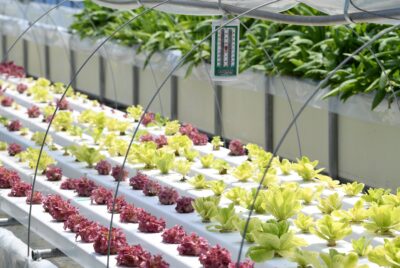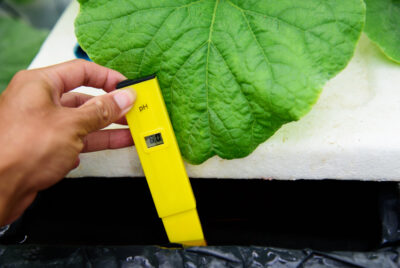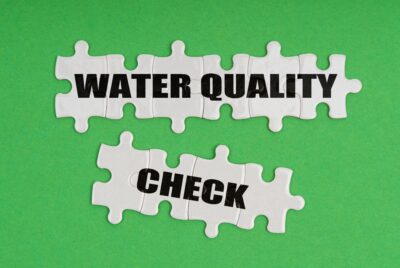Aquaponics
We may earn a commision from purchases made using our links. Please see our disclosure to learn more.
Introduction to Aquaponics.
As an ardent enthusiast and advisor in the intriguing realm of aquaponics, I take great pleasure in illuminating the numerous advantages this cutting-edge farming method offers. Today, we’re embarking on a comprehensive journey through the vast universe, a journey where we’ll unravel its fascinating history, elaborate on its operational principles, and shed light on the multifaceted benefits it offers to humans and the environment.
What is Aquaponics?
At its heart, it is a forward-thinking and sustainable form of agriculture that ingeniously combines two distinct, yet interconnected disciplines: aquaculture, which involves raising aquatic animals such as fish, and hydroponics, a method of cultivating plants without soil. This innovative approach creates a symbiotic relationship where the waste produced by aquatic animals serves as a potent, all-natural fertilizer for plants. In return, the plants take up these nutrients, effectively purifying the water that the animals live in. This cycle continues, forming an integrated, efficient system. The balanced harmony of this cycle is a testament to the intricate beauty of nature, wouldn’t you agree?
The History of Hydroponic-aquaculture
The roots of hydroponic aquaculture are deeper than many realize, extending back into the annals of history. Although our advanced technology has amplified and optimized the processes involved, the core idea has existed for centuries. Civilizations such as the Aztecs and ancient Chinese societies used similar methods, developing proto-aquaponics systems to cultivate crops and rear aquatic animals concurrently. These ingenious cultures recognized the intrinsic relationships within ecosystems, leading to the creation of incredibly sustainable agricultural practices. Incredibly, without even realizing it, they were practicing a rudimentary form of what we now call aquaponics. Isn’t it awe-inspiring to discover how our ancestors were such insightful environmentalists?
How Does Hydroponic-aquaculture Work?
Basic Principles
In essence, it is a natural and mutually beneficial relationship between plants and aquatic animals, forming a self-sustaining ecosystem. The mechanism of operation is fairly simple yet effective. The fish produce waste, which comprises ammonia and other substances. This waste might be detrimental to the fish if left unchecked. But here’s where the magic happens. The system is populated with beneficial bacteria, which convert these waste substances into nutrients essential for plant growth. Consequently, the plants uptake these nutrients, in the process purifying the water, which is then recycled back into the fish tank. It’s like a natural water recycling system, where every member contributes and benefits! The circle of life in motion, wouldn’t you say?
Components
The system has three major components. Firstly, there’s a tank (or several tanks) for the fish. Secondly, you have a grow bed for the plants, which can be filled with a soilless medium like clay pellets or gravel. Lastly, you have a system of select hydroponic instruments and controllers to pump and filter the water between the fish tank and the plant bed, facilitating the continuous cycling of water and nutrients. It might sound complicated initially, but when broken down, it’s quite a straightforward and efficient setup, don’t you think?
Benefits of Aquaponics
Environmental Benefits
The environmental benefits of aquaculture-hydroponics integration are far-reaching and impactful. Firstly, it uses significantly less water than traditional farming methods. This is because water in a system is continually recycled, with minimal losses mainly through evaporation. Compare this to traditional irrigation, where water is often wasted as runoff. In times of increasing water scarcity, can we afford to overlook such an efficient system?
Furthermore, this type of farming can take place on almost any scale and in many climates, which means it doesn’t require vast tracts of arable land. This could potentially reduce deforestation and habitat destruction driven by the constant need for more farmland.
Also, due to the symbiotic relationship between plants and fish, there’s no need for synthetic fertilizers or harmful pesticides. Thus, we eliminate the risk of chemical runoffs polluting our water bodies. Can you visualize a farming system that’s both productive and eco-friendly, all while mitigating some of the major environmental issues we face today?
Health Benefits
Soil-less aquaculture offers significant health benefits by enabling you to produce your own organic, pesticide-free produce right in your backyard. Given that you control the entire process, you can be sure of the quality and safety of your harvest. It’s a joy to consume food you’ve grown yourself, and even more so when you know it’s packed with nutrition and free from harmful residues. Whether it’s plump, juicy tomatoes, fresh, crispy lettuce, or a selection of aromatic herbs, you have control over what goes into your meals. Imagine the satisfaction of savoring a delicious, nutrient-rich, homegrown meal – it’s a feeling like no other!
Economic Benefits
Did you know that Aquaculture-hydroponics integration could also be kind to your wallet? By growing your produce, you can significantly cut down on grocery bills. But the benefits don’t stop there. Given the rising demand for organic, locally-grown produce, you could turn your venture into a profitable business. Selling your surplus harvest at a local farmers market or to specialty grocery stores could bring in extra income. Who wouldn’t like the idea of making money from a hobby that’s also positive for the environment?
Starting Your Aquaponics Journey
Selecting the Right System
The first step in your journey is selecting the right system for your needs. This will largely depend on factors such as the space you have available, your budget, and your goals. Do you want a small indoor setup to provide fresh herbs and vegetables for your family? Or are you thinking of a larger outdoor system with Co2 generators that can feed your community or even turn a profit? From compact units designed to fit on a countertop to expansive outdoor setups, there’s a solution to match every aspiration. Isn’t it great when you get to tailor things precisely to your requirements?
Choosing the Right Fish and Plants
One of the key factors influencing the success of your system is choosing the right fish and plants. Different species of fish and plants thrive under different conditions. It’s important to select fish that are adaptable and resilient and plants that can thrive on the nutrients provided by these fish. Factors such as your local climate and the size of your system will also influence your choices. It’s a bit like putting together a jigsaw puzzle, where every piece must fit perfectly to complete the picture. The result? A balanced, thriving ecosystem that’s a joy to manage.
Maintaining Your System
Maintaining your system requires routine tasks such as feeding the fish, monitoring water quality, and ensuring the plants are healthy. It’s not just about keeping the system running; it’s about optimizing it so all inhabitants – plant, fish, and bacterial – can thrive. You’ll also need to periodically harvest your crops and replace them to keep the system productive. While it may seem like a lot, remember that this maintenance is integral to the running of a self-sustaining ecosystem. And the rewards? Fresh, organic produce, a healthier environment, and the unbeatable satisfaction of nurturing life.
Conclusion
In conclusion, this type of system is a versatile, sustainable, and efficient method of farming. It provides substantial environmental, health, and economic benefits, and the opportunity to contribute to a more sustainable future. So why not start your journey today? It’s a decision you’re unlikely to regret, and I am here to guide you every step of the way!
Faq’s
Can I set up an aquaponics system indoors?
Yes, indeed! These systems can be designed to fit into smaller, indoor spaces. With the right setup, you can grow fresh produce year-round, right in your home!
What type of fish is best for hydroponic aquaculture?
The best type of fish depends on factors such as your location and the size of your system. However, species such as tilapia, catfish, and goldfish are popular due to their hardiness and adaptability.
What plants can I grow in a soil-less aquaculture system?
You can grow a wide variety of plants, including leafy greens, herbs, and various vegetables like tomatoes, cucumbers, and peppers. Fruit-bearing plants like strawberries can also thrive in this system!
Is aquaponic gardening organic?
Yes, it can indeed be organic! If you feed your fish organic feed and refrain from using any synthetic additives in your system, your produce can be considered organic.
How much maintenance does a system require?
While it varies depending on the size of the system, typical maintenance tasks include daily feedings for the fish, regular checks on water quality parameters, and routine plant care. Though it requires some effort, maintaining an aquaponics system can be a rewarding experience!
Is aquaponics better than hydroponics?
Aquaponics stood out, mainly due to its sustainability factor.





Comments are closed.